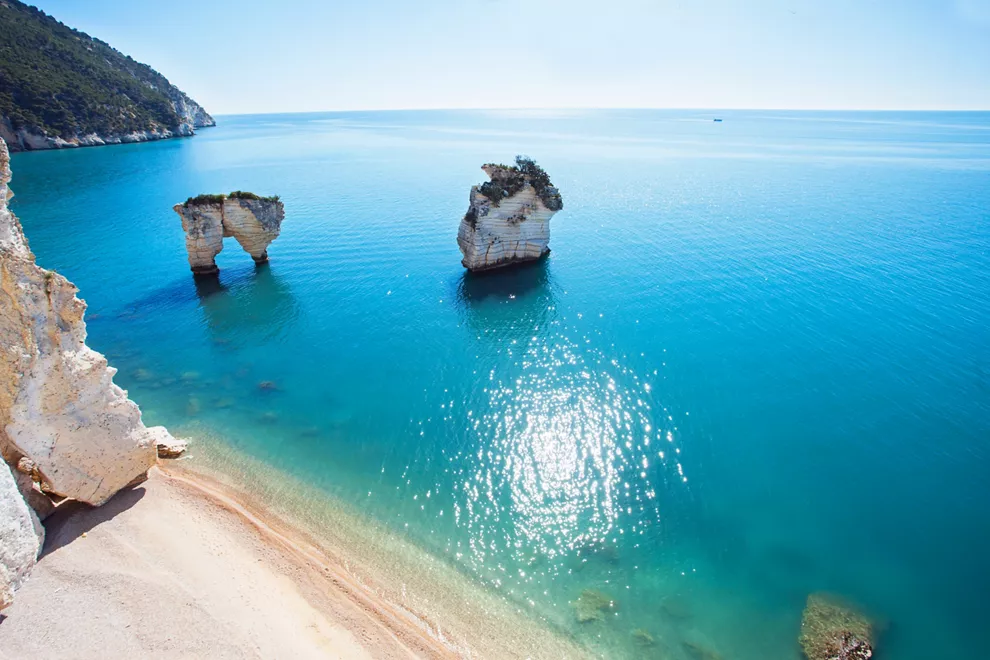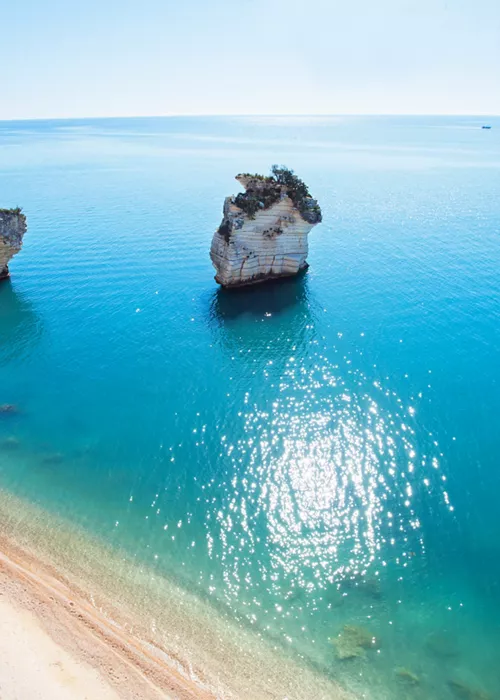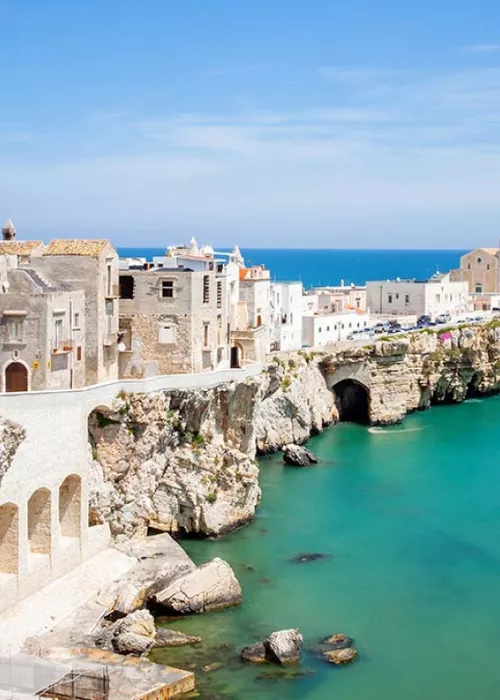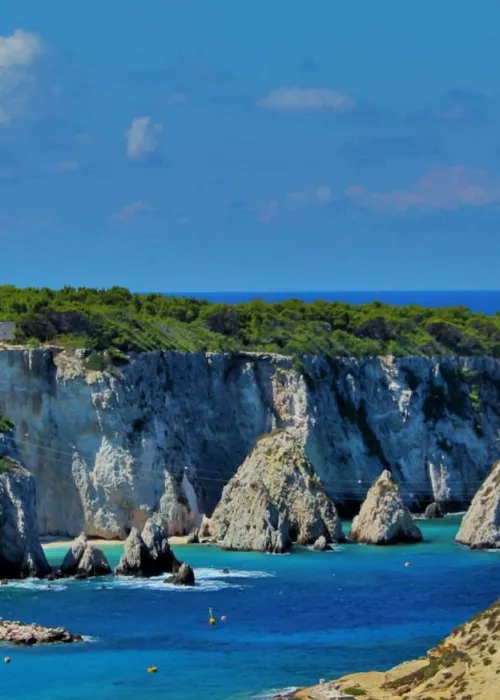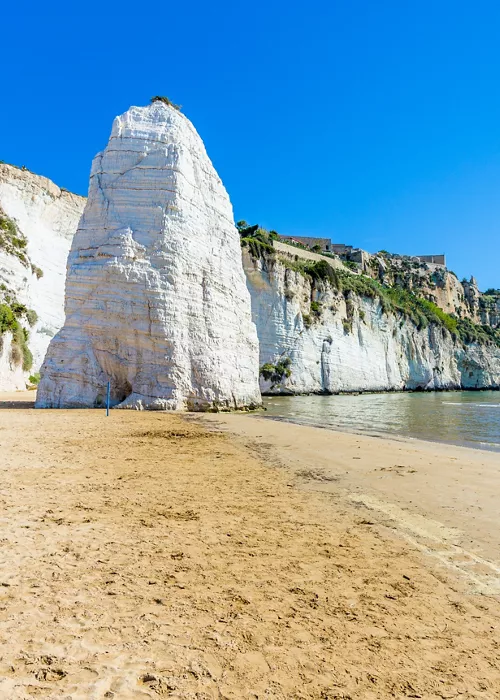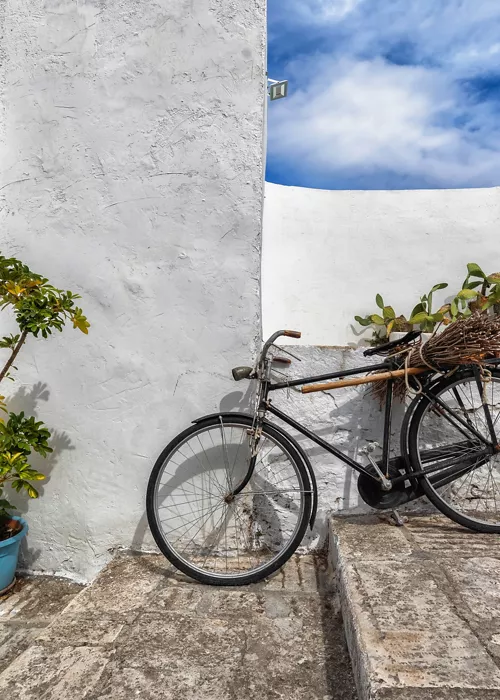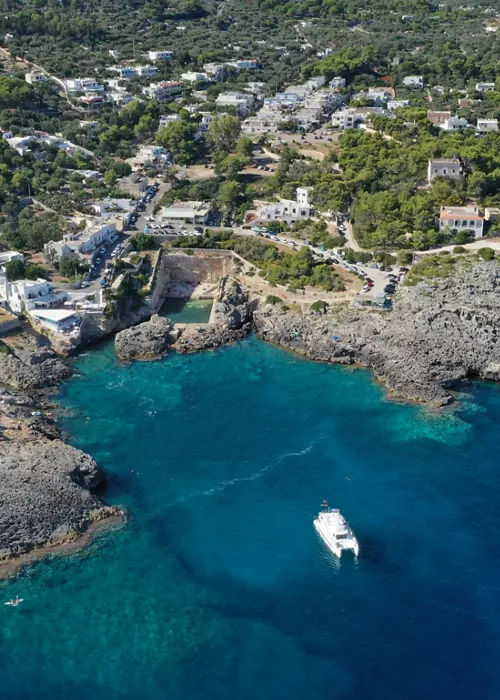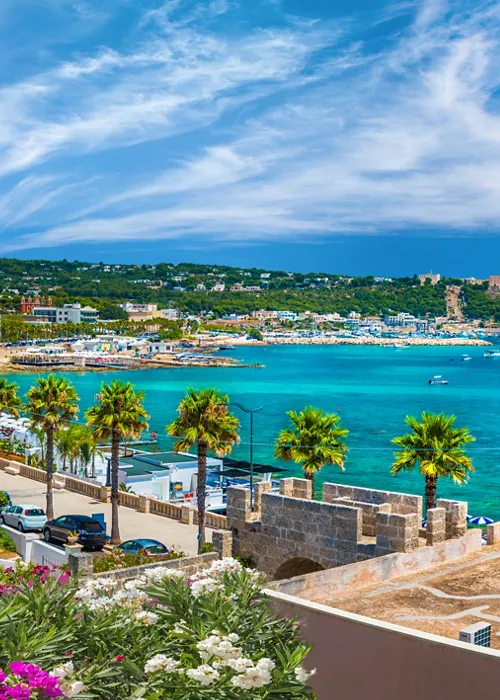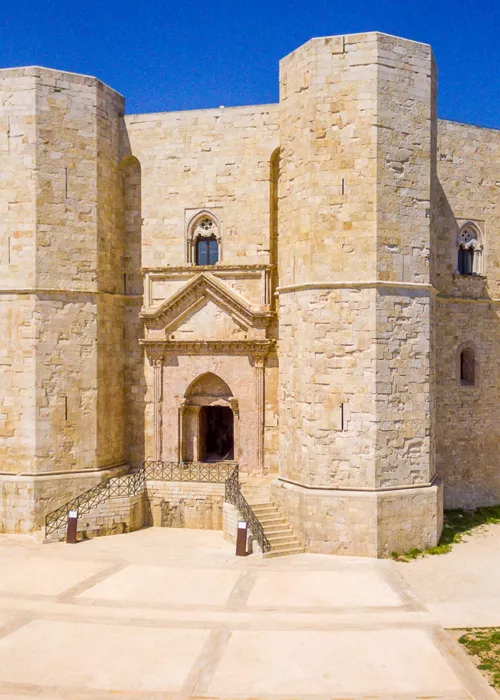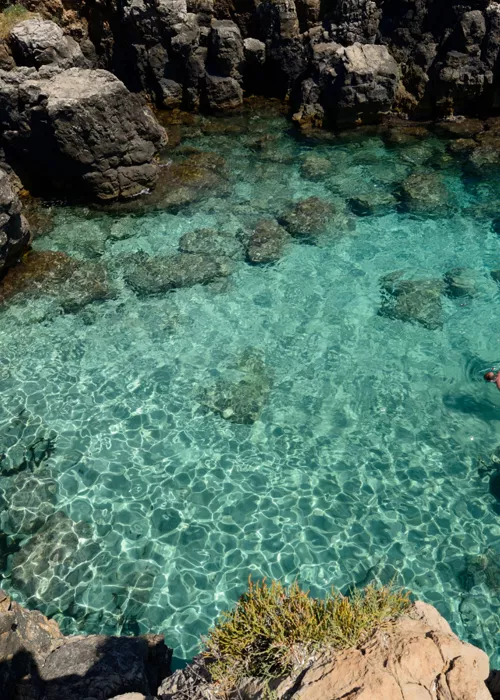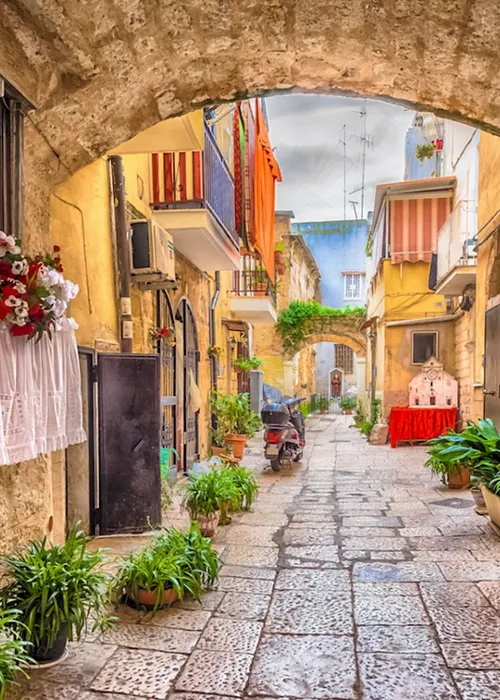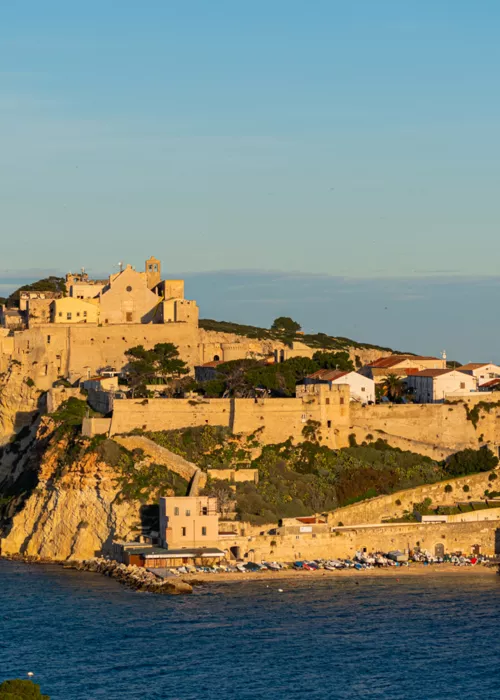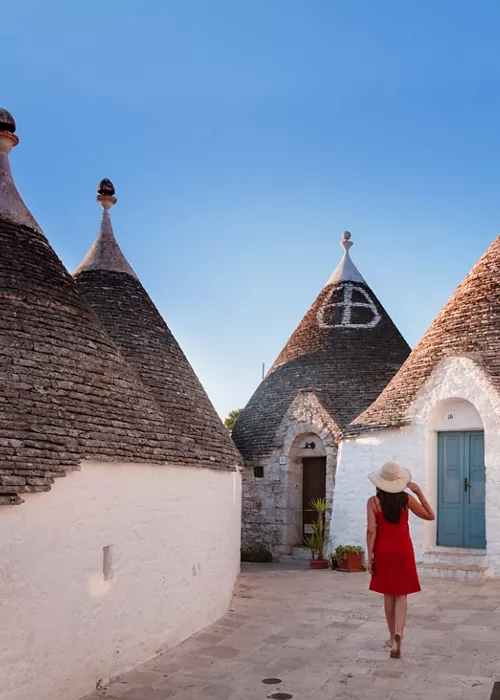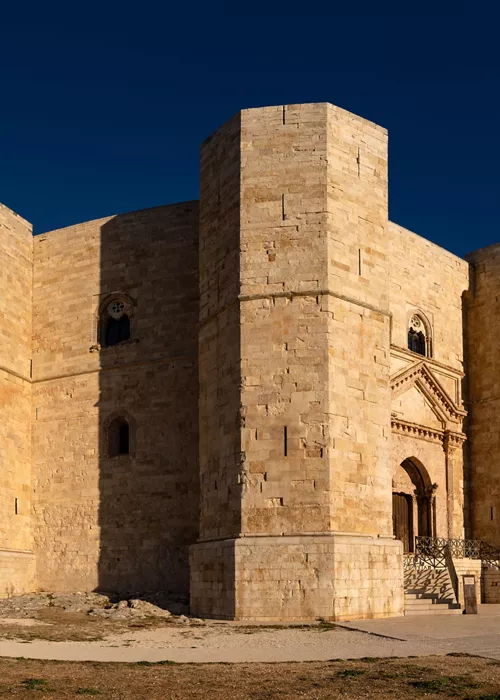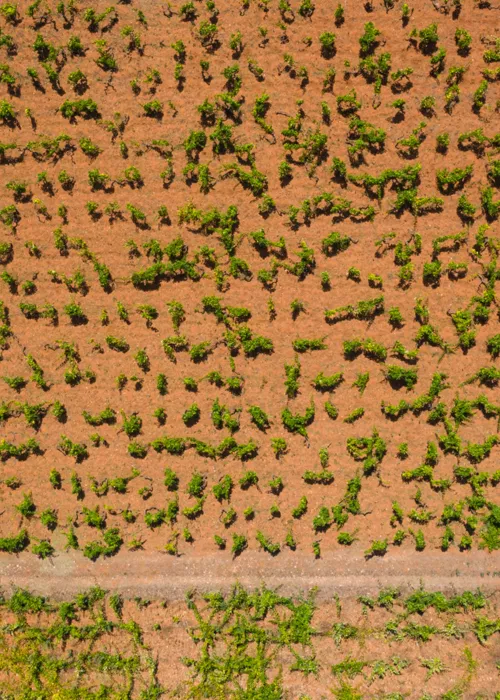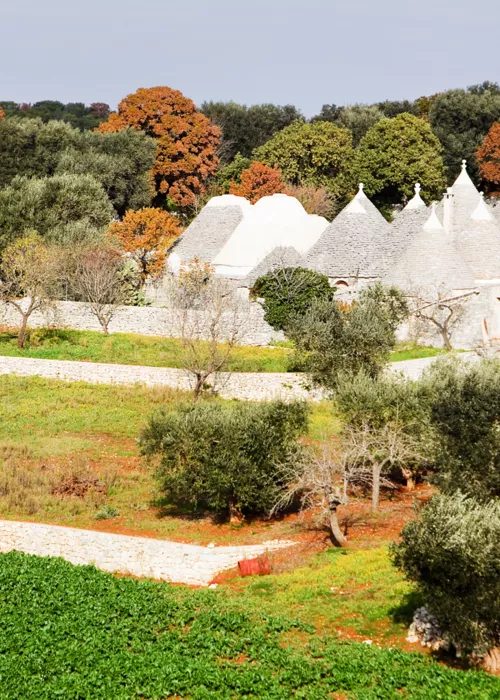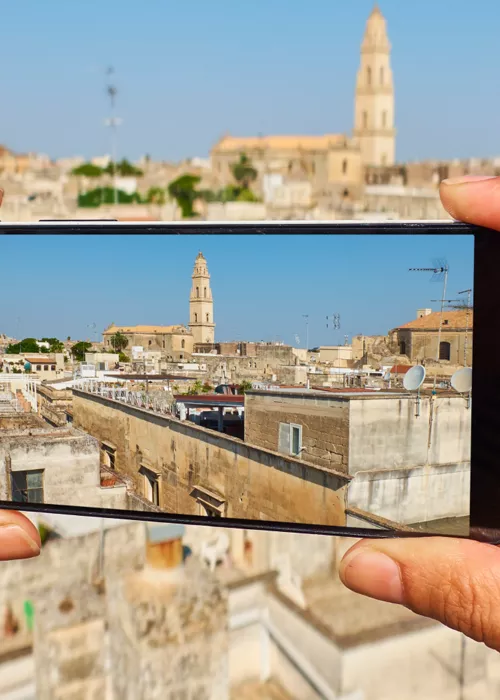The enchanting crystalline sea of the Zagare Bay in the Gargano district
3 minutes
This location, in the northern part of the Apulia region, is situated on the Gargano promontory (the “spur” of the Italic pensinsula) extending out into the Adriatic Sea. The bay is characterised by crystal clear waters , the purity of which has been recognised by the Italian Legambiente environmentalist association, which awarded it a “3-sail” rating.
The cove of dreams
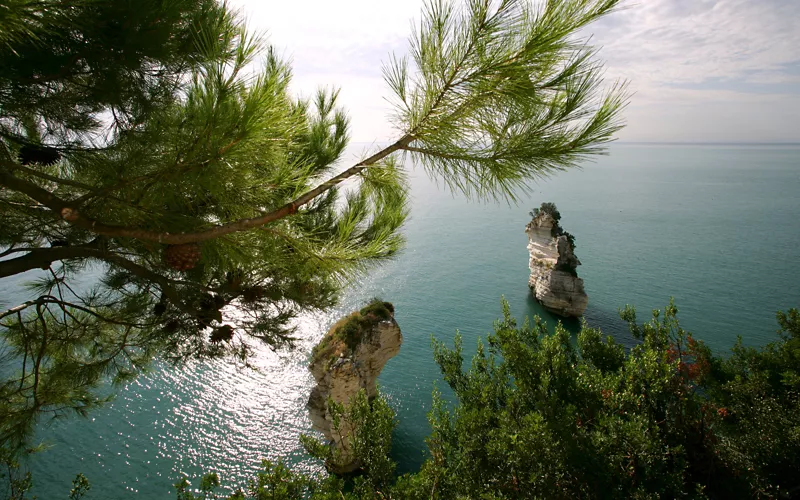
The Baia delle Zagare, also known as the Baia dei Mergoli due to the presence of the “merli” (blackbirds) that nest there, is located between Mattinata and Vieste in the province of Foggia and is indeed a symbolic location in the Gargano area.
The scenery is thrilling: wild rocky cliffs plunge into the transparent waters, and stacks of light-coloured rock emerge just a short distance from the shore. The seawater presents varying shades of emerald and blue, while the high sheer cliffs along the coastline present a range of colours, ranging from white, close to the sea, to deep shades of green produced by dense vegetation covering the rock formations. The light-coloured pebbles in the sand along the shoreline reflect the sunlight.
The bay is divided into two sections by a solid, imposing limestone cliff. It would be a good idea to put your mask, snorkel and fins in a rucksack and walk over to the rock stacks known as L’Arco di Diomede (The Arch of Diomedes) and Le Forbici (The “Scissors”). Access to the bay is reserved for guests at the local hotel or for those who have acquired the relative pay-pass.
The perfume of love
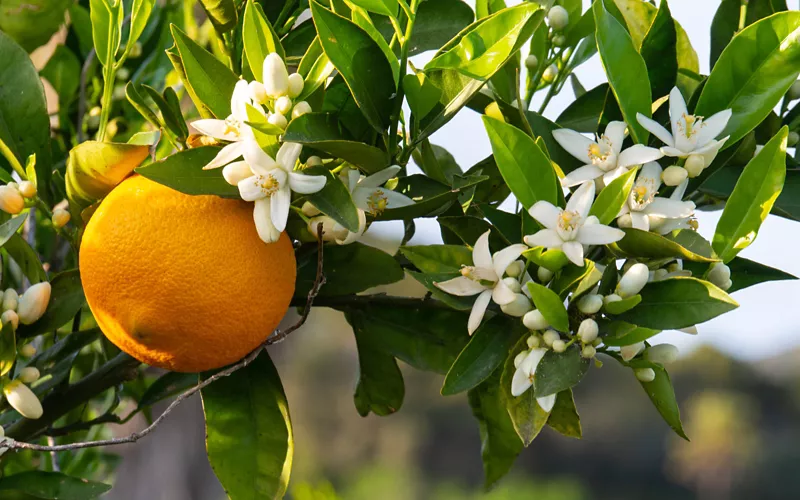
If you visit Zagara Bay during the spring and the autumn you may have the impression you have been sprayed with a mild dose of eau de Cologne. We should note that the name of this enchanting location is related to the local citrus fruits which release into the air the unmistakable scents of the spring and the autumn flowering periods. The name “Zagara” is of Arabic origin and derives from the word “zahra”, meaning “white flower”. The word refers in particular to pale orange blossom, however in Southern Italy it has a more extensive usage and may also be adopted in the case of other citrus fruits, including lemons and bergamots.
Legend has it that orange blossom is a symbol of love, fidelity and purity on account of its candour and sweet, delicate essence. The little flowers are used to produce cosmetics and perfumes, and also miele di Zagara (orange-blossom honey), preferably organic, a specialty to be tasted on a slice of the renowned typical Apulian bread.
The Mattinata district
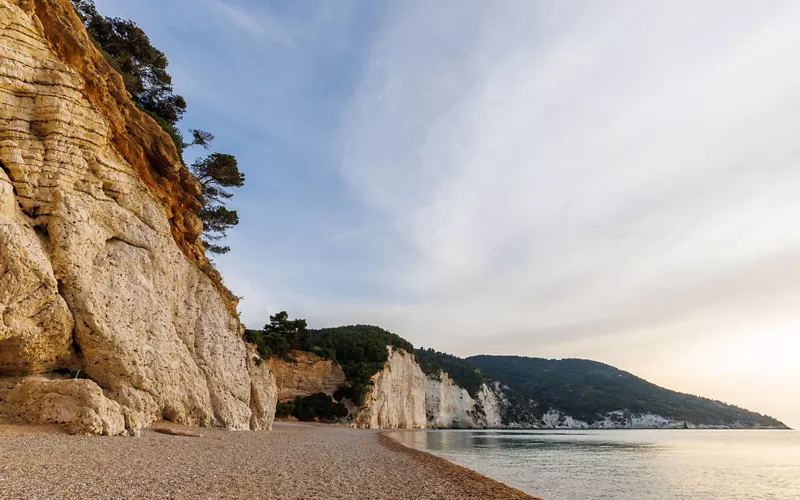
The Piana di Mattinata is a flatland area well worth exploring if you have chosen this area for a seaside holiday. It is the longest shoreline on the Gargano promontory and comprises a series of beaches, including entirely free areas, retaining their original natural features, and beaches offering many services, with seaside resort and bathing facilities. The Monte Saraceno mountain spur, which dominates the skyline around the plain, descends into the sea creating a grand scenographic effect. The setting is framed by high sedimentary rocks covered in pine trees.
The Vignanotica Beach, not far from the Baia delle Zagare, is a spectacular gift of the natural environment. It is generally less crowded than the other sites, even during the busiest periods of the summer. The 500-metre long beach, formed by a blend of sand and golden gravel, extends beneath a steep cliff with grottos and small openings at the farthest point.
The national park
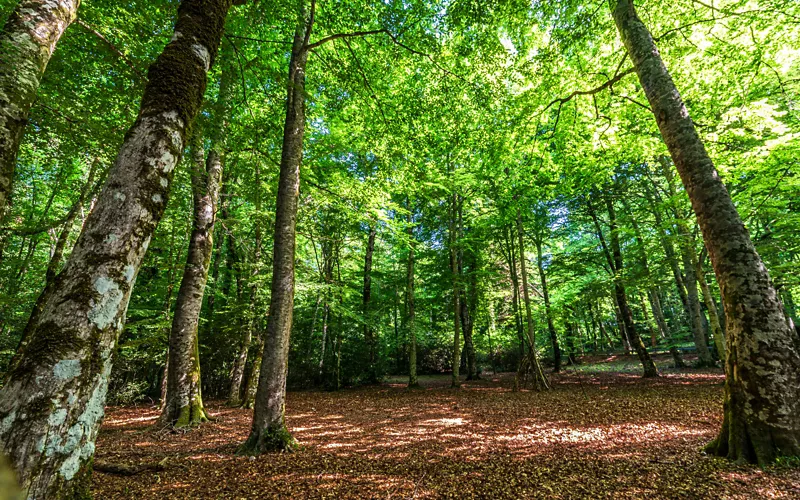
The entire coastline, including the Baia delle Zagare, forms part of the Gargano National Park, covering approximately 120,000 hectares in a spectacular natural landscape. This is one of the largest protected natural areas in Italy, with an extraordinary level of biodiversity. As you move from one beach to the next you will note the delightful presence of irises and euphorbia, orchids, citrus and olive trees and pear cactus plants.
Moving farther inland, the vegetation changes and you will walk in the shade of holm oaks, maple, elm and linden trees and yews. You may also come across a few roe deers. The peregrine falcon is one of the 150 species of birds that nest here.
The Umbra Forest is the innermost area of the parkland and is worth visiting when you have had your fill of the salty air and sunshine. The hills reach a height of 800 metres above sea level and some areas extend as far as the coastline. The enormous Aleppo pine and beech trees generate fresh, healthy air also in the hottest season.

